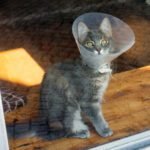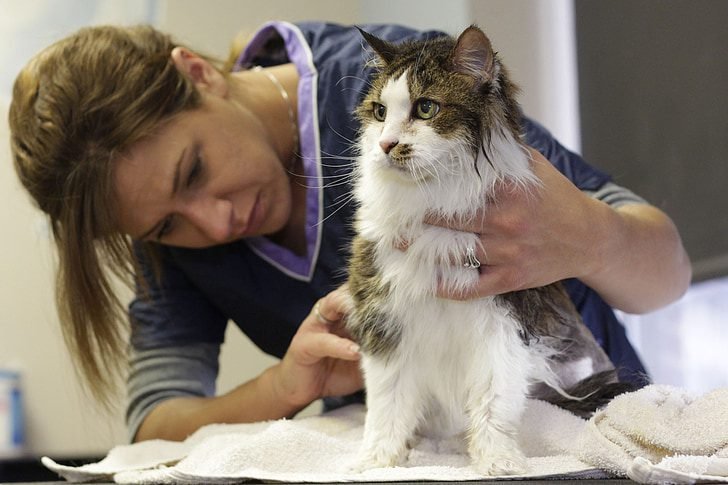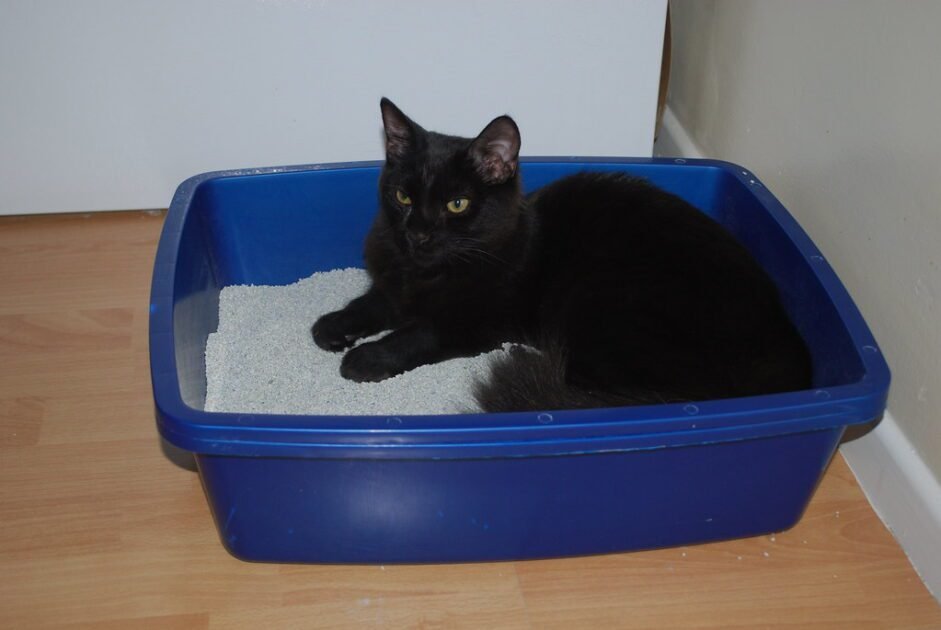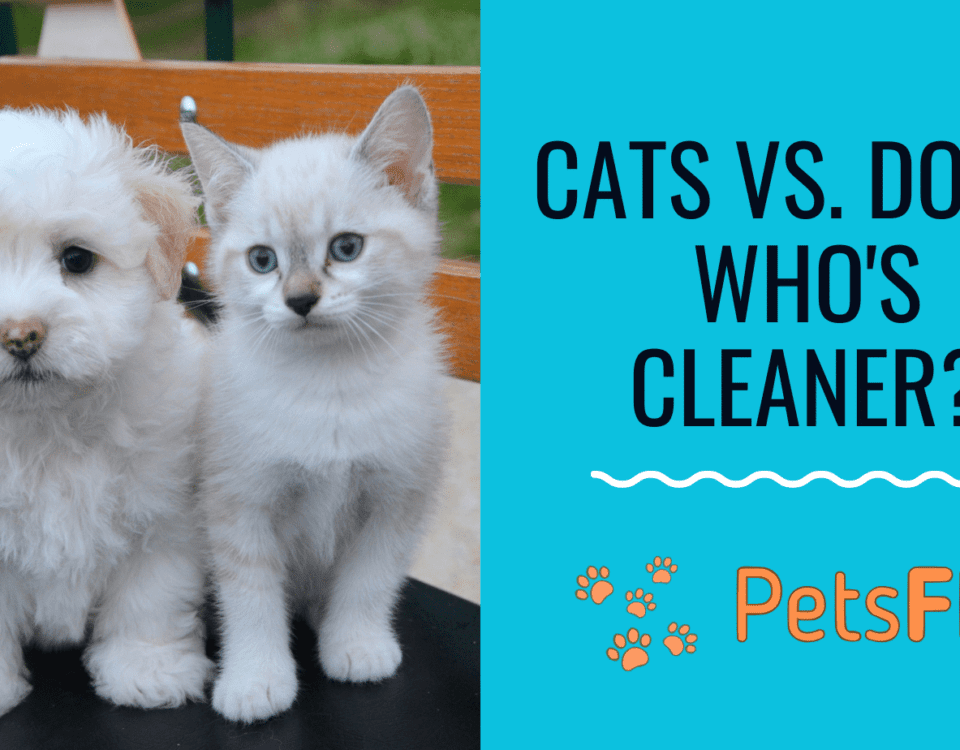


How long does a cat need to wear a cone after being neutered?
December 30, 2023


Can Birds Eat Chia Seed? Here Are All the Health Benefits!
December 30, 2023As cat owners, we are well-acquainted with feline care’s delightful and challenging aspects. A common but less pleasant concern is discovering litter particles sticking to our cats’ bums. While this may initially seem like a minor issue, it can lead to discomfort for your cat and impact their cleanliness. But why does it happen?
Litter sticking to a cat’s rear can be influenced by factors such as the type of litter, fecal consistency, fur length, and health issues like obesity or arthritis, which hinder self-grooming. Overweight cats, those with joint pain, and long-haired breeds are more prone to this issue.
Fortunately, there are effective ways to tackle this problem that you will learn in the article below.
Why Does The Cat Litter Keep Getting Stuck To The Cat’s Bums?
Here are some primary reasons the litter gets stuck to your cat’s bum.
1: Type Of Cat Litter You Are Using
Clumping cat litter, often containing bentonite clay, forms solid clumps in contact with moisture, allowing for easy daily waste removal. This feature aids in keeping the litter box tidy.
However, for cats with long hair or sensitive areas, these clumps might stick to their fur or around the anal region, causing discomfort and potentially leading to feces being trapped.


Types of Cat Litter
Alternatively, non-clumping cat litter, which may be made from various clays, recycled paper, wood, or corn, doesn’t form clumps and tends to be more affordable. It’s less prone to sticking to a cat’s fur and behind, but it’s less effective in controlling odors and requires frequent full-box replacements.
While non-clumping litter reduces the likelihood of litter adhering to a cat’s behind, it doesn’t completely prevent it.
Here is a guide to different types of Cat Litter
2: Cat’s Stool Consistency
The texture of a cat’s stools is crucial to their health and cleanliness. Softer stools tend to cling more to a cat’s fur, particularly near the bum, making cleaning challenging and causing discomfort. This also raises the chances of litter adhering to their fur.
Conversely, hard or dry stools can result in constipation, which the cat has difficulty eliminating. These dry feces may stick to the fur around the cat’s bum, causing discomfort and hygiene problems and heightening the likelihood of litter sticking.
3: Fur-Matting In Cats With Long Hair
Breeds with long fur, such as Persians, Maine Coons, and Norwegian Forest Cats, need consistent grooming due to their luxurious coats.
The fur around their hindquarters is prone to matting with feces, causing discomfort, odor, and a higher risk of skin infections.
The volume and length of their fur can make self-cleaning difficult, and if not properly groomed, it may attract parasites like fleas and lead to painful mats.
Regular grooming, including combing to avoid mats and professional sanitary trims around the rear, is crucial for these cats. A diet that ensures firm stools is also essential to minimize feces sticking to their fur.
Must Read: Why is My Male Cat Attacking Female Cat? How To Stop?
4: Health Conditions In Your Cat
When cats are sick or unwell, lethargy may impede their grooming habits, leading to a soiled anus post-defecation.
Cats that are overweight or obese often struggle to reach their hindquarters, resulting in feces sticking to their fur. Similarly, cats with arthritis or aging senior cats may find grooming their rear ends painful or challenging due to decreased flexibility.


Cat Cone Closeup
For overweight cats, a veterinarian-recommended diet and exercise regimen can aid in achieving a healthier weight, enhancing their grooming ability. In health issues, effective pain management and appropriate medications can ease self-grooming.
Assisting with grooming, such as using pet-friendly wipes, is also helpful. Regular veterinary check-ups are vital for overseeing and addressing these conditions effectively.
Must Read: How To Prevent Cat’s Biting and Humping Behavior?
How can You Stop The Litter From Sticking On Your Cat’s Bums?
1: Selecting The Right Litter
Choosing the suitable litter is critical to preventing it from sticking to your cat’s bottom. Non-clumping litter often works better for long-haired cats as it’s less likely to adhere to their fur.
If you prefer clumping litter for easy cleaning and odor control, opt for one with larger granules to minimize sticking. Experiment with different types to see which one suits your cat best.
2: Dietary and Health Management
A well-balanced diet is vital for your cat’s overall health and stool consistency. Healthier diets lead to firmer stools, which are less prone to stick.
If your cat has persistent soft stools, a vet consultation is advisable as it may signal a health issue. Keeping your cat at an ideal weight aids their grooming ability, decreasing the chances of waste sticking.
3: Essential Grooming and Appropriate Tools
Regular grooming helps keep your cat clean and reduces the chances of litter and fecal matter sticking. Trimming the fur around the bottom of long-haired cats can be especially helpful.


Cat Litter Stuck in Paws
Use cat-friendly brushes or combs for gentle debris removal. Consider a professional groomer if the gets matted, as home attempts to untangle mats can be painful. For gentle cleaning of the bum area, pet-friendly wipes or a damp cloth can be used after litter box visits.
4: Importance of Veterinary Visits
Frequent vet visits are essential to catch and manage health problems affecting your cat’s grooming. Issues like arthritis or obesity may impede their grooming capability, increasing the risk of litter sticking.
Regular health checks help maintain your cat’s self-grooming ability, ensuring comfort and hygiene.
Also, Read: 18 Cat Breeds With Very Long Legs Comprehensive Guide
Tips On Removing Cat Litter From Its Bums
1: Approach With Care
Cats are delicate, particularly around their bum. Approach them calmly and speak softly during cleaning to ease their anxiety. If your cat becomes stressed or agitated, pause and try again later. Avoid rushing or forcing the process to prevent fear and mistrust.
2: Rinsing Technique
For more persistent debris, gently rinse your cat’s rear under lukewarm water. Since most cats dislike water, this process should be done with patience, gentleness, and speed.
3: Seek Professional Help
Be cautious not to pull on any litter or mats, which can be painful and damage the skin. If you encounter dry, matted feces that can’t be gently removed, it’s advisable to consult a professional groomer for safe removal with electric clippers.


Cat Professional Help
4: Warm Water and Cloth Method
If pet wipes aren’t available, a soft cloth or sponge dampened with warm water is a suitable alternative. Gently pat the area instead of rubbing to prevent irritation. Use a cat-specific shampoo for deeper cleaning, as human shampoos can disrupt your cat’s skin pH balance.
5: Use Pet Wipes
Choose unscented, hypoallergenic pet wipes for cleaning your cat’s bum. These wipes are formulated to be safe and effective for pets and can remove litter or feces without harm. Human wipes, which may contain harmful chemicals or fragrances, should be avoided as they irritate a cat’s skin.
Recommended Reading: Why Do Birds Attack Cats? Understanding and Prevention
Bonus Section: Best Practices for Litter Box Maintenance
Proper litter box maintenance is crucial for your cat’s hygiene and overall well-being. Here are concise, essential tips to ensure a clean and appealing litter environment:
- Right Location: Place the litter box in a quiet, accessible spot, away from food and water bowls.
- Number of Boxes: Have one more box than the number of cats in your home to avoid overcrowding.
- Regular Scooping: Clean the box daily to remove waste and keep the litter fresh.
- Deep Cleaning: Empty and scrub the box with mild detergent every few weeks; refill with fresh litter.
- Appropriate Litter: Use a litter type suited to your cat’s needs, keeping it 2-3 inches deep for comfort.
- Monitoring Usage: Observe your cat’s litter box habits for signs of health issues.
- Odor Control: Choose natural, unscented litter and consider adding baking soda to neutralize odors.
- Litter Box Accessories: Use liners and mats if helpful, but avoid scented products.
- Respecting Preferences: Pay attention to whether your cat prefers covered or open boxes.
- Eco-friendly Options: Consider using environmentally friendly litter like recycled paper or wood.
By following these tips, you can maintain a hygienic litter box, ensuring your cat’s comfort and health.
Read Next: How long does a cat need to wear a cone after being neutered?
Conclusion
Dealing with cat litter sticking to a cat’s bum, a common issue particularly in long-haired or overweight cats is essential for their comfort and cleanliness. Understanding why this occurs — due to the litter type, stool consistency, or grooming challenges — is vital to finding practical solutions.
Often, simple measures like switching litter types, focusing on grooming the bum area, or adjusting the diet for more solid stools can be effective. Regular veterinary check-ups are crucial for early detection and treatment of any underlying health problems contributing to this issue.
It’s important to remember that each cat is different, and what works for one may not suit another. If you’re facing this problem, seeking advice from a vet or professional groomer is a good idea. With proper knowledge and care, you can ensure your cat remains clean, comfortable, and content.



